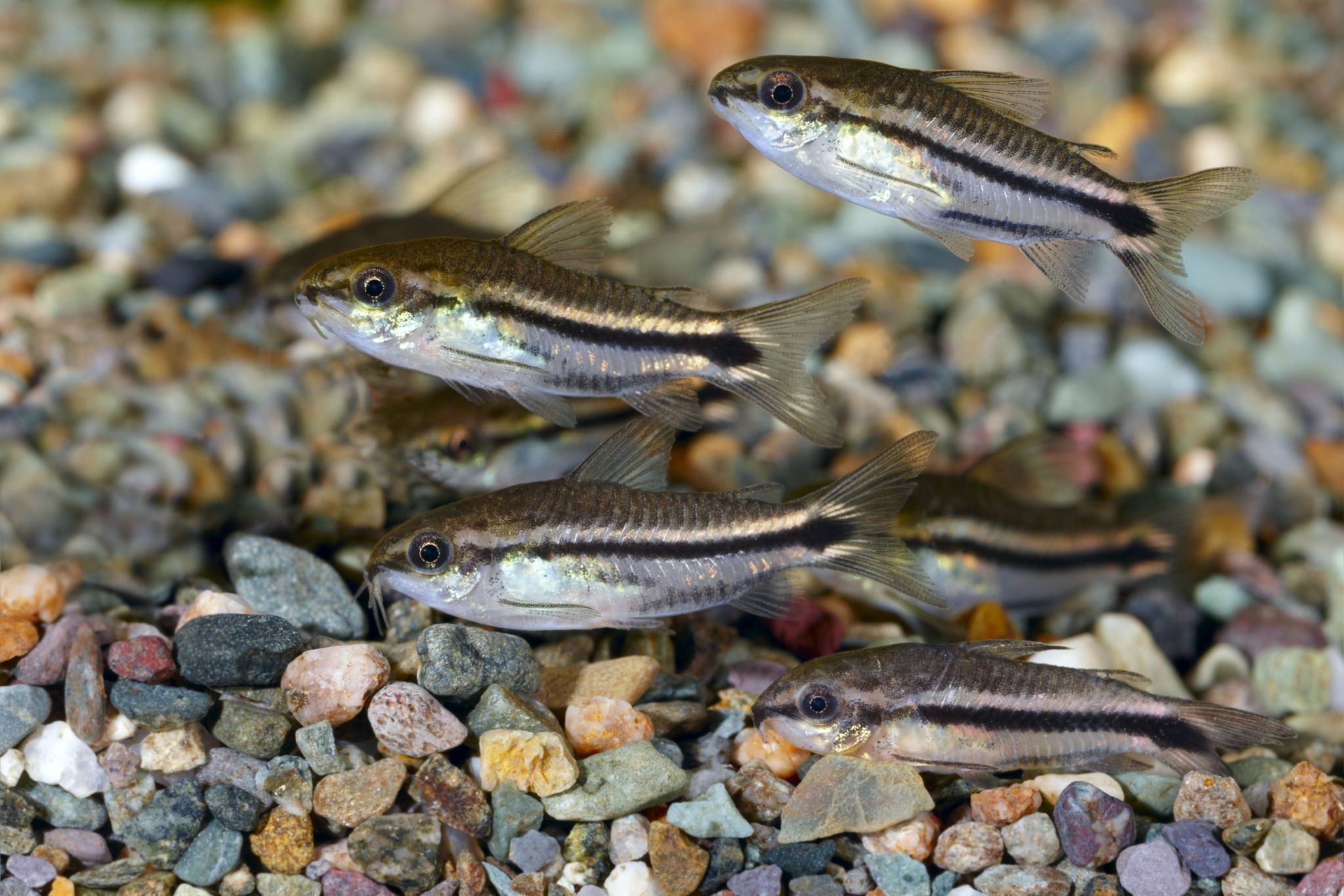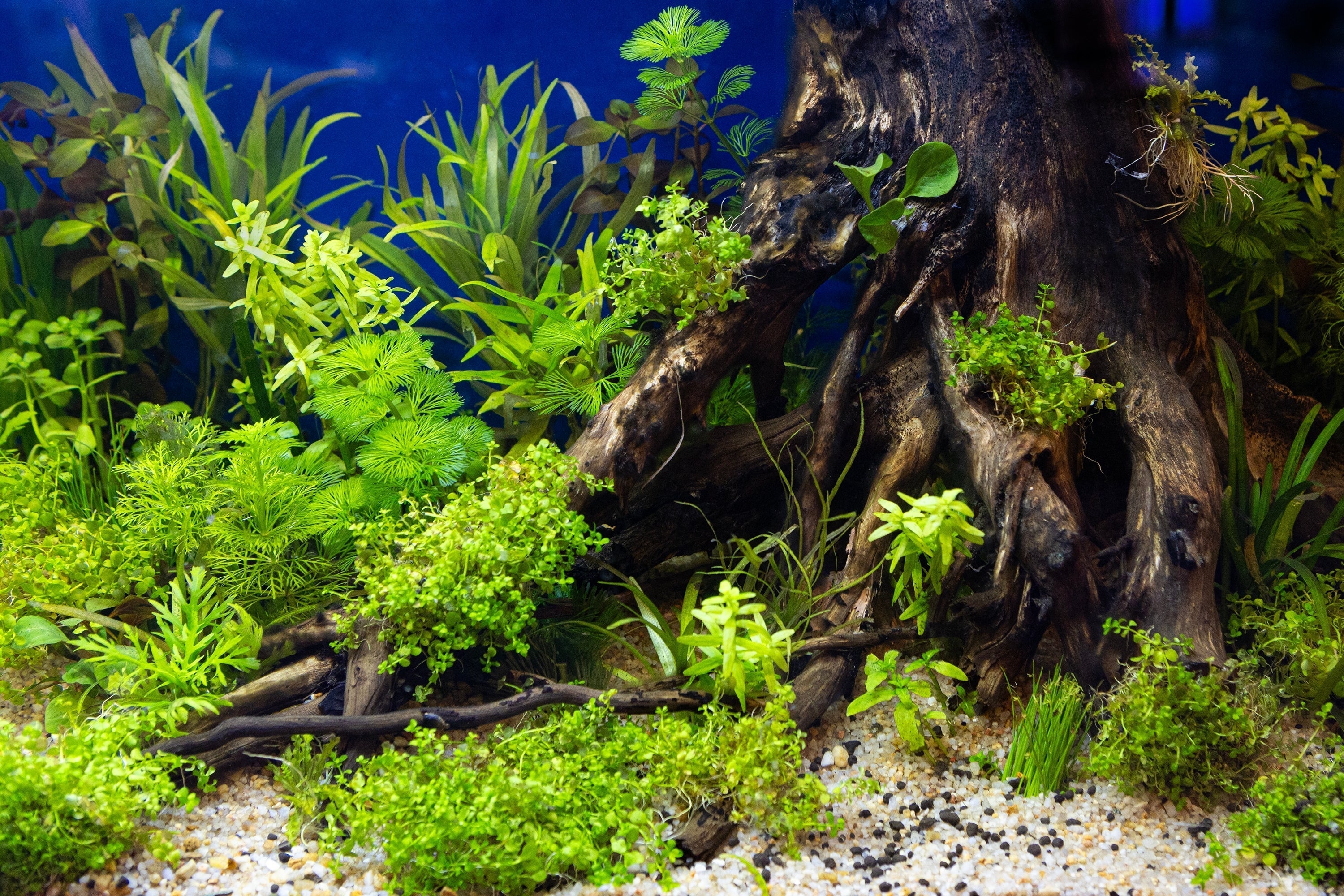Table of Contents
Corydoras Catfish, affectionately known as corys, is a joy to watch and a must-have for any peaceful community tank. Their playful bottom-dwelling antics, charming barbels, and peaceful nature make them a favorite freshwater fish among aquarists of all levels. If you're eager to create an ideal habitat for these endearing tropical fish, this comprehensive guide will walk you through every step, ensuring your cory catfish thrive in their new home.
What is the Right Tank Size for Beginners?
Choosing the right tank size is crucial for the well-being of your corydoras catfish. As social creatures, they flourish in groups. A minimum of 10 gallons is suitable for a small school of 3-5 corydoras, but a larger size of 20 gallons tank or more is recommended for a thriving community. The extra space allows these schooling fish to establish territories, engage in natural behaviors, and reduce the risk of stress. Consider a rimless aquarium for unobstructed viewing and a sleek aesthetic that complements any home décor.
What are Required Equipment for A Fish Tank?
To set up a fish tank for Corydoras Catfish, here are some required aquarium supplies that every fish keeper needs:
Filter
A reliable filter is essential for maintaining water quality in your cory tank. Sponge filters are highly recommended due to their gentle water flow and ability to create a beneficial biological environment. Corydoras catfish are sensitive to strong currents, so avoid filters that create excessive turbulence.
Air pumps
While not always mandatory, air pumps can be beneficial for corydoras, especially in warmer waters or heavily planted tanks. Connect the air pump to an air stone or sponge filter to increase oxygen levels and create gentle water movement, simulating their natural habitat.

Aquarium Lights
While corydoras aren't particularly demanding in terms of lighting, aquarium lights play a crucial role in plant growth and overall tank aesthetics. If you plan to include live plants, choose lighting that caters to their specific requirements. LED lights are energy-efficient and offer a wide range of color spectrums to enhance the beauty of your underwater world.
Aquarium Soil
Corydora fish are natural bottom dwellers, constantly sifting through the substrate in search of corydoras catfish food. A soft, sandy aquarium substrate is essential to prevent injury to their delicate barbels. Avoid sharp gravel, which can cause irritation and even infection. Consider nutrient-rich aquarium soils like those from Controsoil UNS or Scaperline Soil Oase, which not only provide a comfortable habitat for your corys but also nourish live aquarium plants.
GH/KH Test Kits
Maintaining proper water chemistry is vital for the health of your cory fish. Invest in GH (General Hardness) and KH (Carbonate Hardness) test kits to monitor and adjust water parameters. Aim for a GH between 4-8 dGH and a KH between 2-4 dKH to replicate their natural environment.
TDS Pens
While not essential for beginners, a TDS (Total Dissolved Solids) pen can be a helpful aquarium tool. It measures the concentration of dissolved substances in your water, giving you insights into its overall quality. Corydoras prefer soft to moderately hard water, so monitoring TDS can help you maintain a suitable environment.
Aquarium Lid/Cover
Corydoras are known for their surprising jumping abilities. To prevent accidental escapes and maintain stable humidity levels, use a secure aquarium lid or cover. This also helps reduce evaporation, keeping water parameters more consistent.
How to Set Up A Tank for Fish: Step by Step
After preparing all the equipment, do our step-by-step instructions to set up your Corys fish tank:
- Thoroughly rinse the tank and equipment with water.
- Add a 2-3 inch layer of soft, sandy substrate.
- Fill the tank with dechlorinated tap water or remineralized RO water.
- Install your filter and air pump (if using).
- Add your chosen aquatic plants and decorations like driftwood, ensuring plenty of hiding places and open swimming areas.
- Install a heater to maintain a stable temperature between 72°F and 78°F (22°C to 26°C).
- Allow the tank to cycle for 4-6 weeks to establish beneficial bacteria or use live nitrifying bacteria before introducing the corydoras.

Popular Species of Corydoras Catfish for Beginners
Choosing the right corydoras species is a delightful step in setting up your aquarium. Each Corydora type has its own unique charm and personality, making the selection process an adventure in itself. Here are some popular beginner-friendly types of corydoras catfish that are sure to captivate you:
- Pygmy Corydoras (Corydoras pygmaeus): The smallest of the corydoras family, Pygmy Corys are incredibly active and playful. Their diminutive size and energetic nature make this type of corydora a joy to watch as they dart around the aquarium. Their adaptability and hardiness make them an excellent choice for beginners.
- Green Aeneus Corydoras Fish (Corydoras aeneus): Also known as Bronze Corydoras, these are one of the most common and hardy corydoras species. Green Aeneus Corydoras Fish come in a variety of colors, including green, bronze, and albino. Their vibrant hues and peaceful demeanor make them a popular choice for community aquariums.
- Peppered Corydoras (Corydoras paleatus): This classic favorite is recognized for its mottled pattern, resembling pepper sprinkled across its body. Peppered Corys are active scavengers, constantly sifting through the substrate for corydoras food, which helps keep the aquarium clean.
- Sterbai Corydoras (Corydoras sterbai): With their striking spotted pattern and orange-tipped fins, Sterbai Corys are a showstopper in any tank. They are slightly larger than other corydoras species and are known for their playful and social behavior.
- Corydoras Venezuelanus: These beautiful corydoras display a unique pattern of black spots on a creamy white body, making them stand out in the aquarium. Corydoras Venezuelanus are peaceful and adaptable, making them a great addition to community tanks.
Top 5 Best Tankmates for Corydoras Catfish
- Tetras: These vibrant schooling fish add a burst of color to the aquarium and occupy the upper water levels. These types of tetra also create a visually appealing contrast with the bottom-dwelling corydoras.
- Harlequin Rasboras: Another schooling fish species, Harlequin Rasboras is known for their peaceful temperament and graceful swimming patterns. They coexist harmoniously with corydoras and add a sense of activity to the tank.
- Otocinclus Affinis: These tiny catfish are excellent algae eaters, helping to keep your aquarium clean and pristine. Otocinclus Affinis are peaceful and won't compete with corydoras for food or territory.
- Dwarf Gouramis: These colorful and relatively small fish occupy the middle water levels and provide a captivating display. Dwarf Gouramis generally get along well with corydoras as long as the tank is large enough.
- Cherry Barbs: With their vibrant red coloration and peaceful disposition, Cherry Barbs make a stunning addition to the Corydoras community. This type of Barbs are hardy and adaptable, making them a good choice for beginners.
Best Aquatic Plants for Corydoras Catfish
- Java Fern: A classic and low-maintenance plant that thrives in various lighting conditions, making it perfect for beginners. Its sturdy leaves offer excellent hiding spots for shy corydoras.
- Anubias Nana: This slow-growing aquarium plant is known for its hardiness and adaptability. This Anubias can be attached to bonsai driftwood or aquarium rocks, creating natural-looking landscapes for your corys to explore.
- Cryptocoryne Wendtii: Available in various colors and patterns, Cryptocoryne Wendtii adds a touch of diversity to your aquascape. It's a relatively easy Cryptocoryne plant to care for and thrives in moderate lighting.
- Water Wisteria: This fast-growing stem plant quickly fills in the aquarium and helps absorb excess nutrients. Water Wisteria provides additional cover for your corydoras and adds a lush green background.
- Amazon Sword: If you have a larger tank, an Amazon Sword plant makes a stunning centerpiece. Its broad leaves offer ample hiding places and create a natural-looking environment.
Conclusion
Corydoras Catfish are charming and low-maintenance additions to your aquarium. By following these steps and providing them with a well-maintained environment, you'll be rewarded with their amusing antics and endearing personalities for years to come.
At Splashy Fish Store, we supply a wide range of corydoras catfish for sale from reliable sources. We care about the quality and strive to provide you with the best we can. Visit our fish store online or our aquarium Virginia to find what surprises await you.
FAQs
How many Corydoras can I keep in a 10-gallon tank?
A 10-gallon tank is suitable for 3-5 smaller corydoras species.
Do Corydoras Catfish need a heater?
Yes, they prefer stable temperatures between 72°F and 78°F (22°C to 26°C).
What do Corydoras Catfish eat?
Corydoras are omnivores and enjoy fish food such as sinking pellets, algae wafers, frozen foods like bloodworms, and blanched vegetables.



























